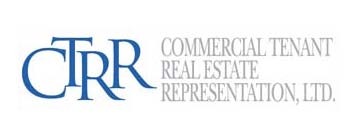
Hidden costs in the alterations, maintenance & repairs clause
Alterations. The alterations-and-improvements clause may give you a false sense of security. It may say that you can make whatever nonstructural change you like so long as you get your landlord’s permission, and that your landlord will be "reasonable." But courts have ruled that things as trivial as lighting fixtures are "structural" components of a building. So a seemingly liberal clause like this could make it impossible for you to move even a single partition.
If you and your landlord disagree about what’s structural, it may declare you in default even if you think the changes you've made are reasonable. Consequently, you may be presented with the unpleasant option of paying a big bill at the end of your lease term or restoring so-called structural changes.
So define in the lease what you mean by structural elements. Limit the definitions to components like bearing walls, columns, roof, and façade. And negotiate for the right to make alterations and improvements inside your space, without your landlord’s permission, so long as your changes don’t affect these few structural elements or the systems that deliver electricity and utilities to other tenants in the building.
Maintenance. In a typical multi-tenant office building, the landlord will be responsible for repairing certain listed items – usually structural elements, the exterior, and parts of the building’s common areas. You’re responsible for maintaining and repairing everything in your space.
What happens when something outside your space has to be repaired and isn’t among the items your landlord promised to take care of? You may have to pay for repairs yourself. Either way, you may have no recourse to the landlord, even if the problem makes your space unusable.
Make sure your responsibilities are specified and limited. Your landlord should be obligated to take care of everything you’re not.
Casualties. Many leases have clauses allowing the landlord to terminate the lease after a minor casualty affecting the building, even though your office space remains quite usable. This clause gives the landlord an opportunity to force you out in a rising market or force you to renegotiate unrelated parts of your lease before it will agree to restore the damage.
Make sure your landlord is obligated to restore the building and your space after a casualty if the work can be done in a reasonable time. You should be able to walk if the damage is so severe that your space can’t be restored at all or within a time that’s reasonable, given your business’ needs. Without this right, you could be forced to pay rent even though you have no more office space.
A doctor in Suffolk County, New York signed an eight-year lease for office space. Less than a year later, the building burned down. The landlord sued to keep collecting rent and won, even though he had no obligation to repair the building. New York law would have protected the doctor against this kind of thing, but the lease contained a clause providing that rent wouldn’t abate and that his responsibility under the lease would continue even if a casualty destroyed the building. In effect, the doctor signed away his legal rights.
Wear and tear. Your lease should at least stipulate that you’re not responsible for repairing normal wear and tear. Some landlords require tenants to "restore" their leased space when they leave. You shouldn’t agree to such an arrangement. Since almost every tenant has needs that require modification of the space, restoring the space would cost you a lot without substantial benefit to the landlord. Chances are good that much of the restored carpeting, partitions, and so on will be torn out to modify space for the next tenant who comes along.
